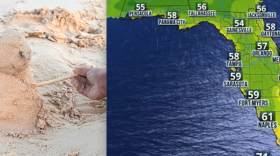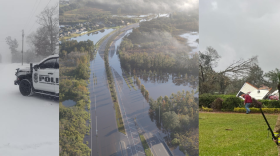Red tide is not only afflicting fish and people who live on or visit the beach. Nesting sea and shore birds are especially vulnerable this time of year.
Several American oystercatchers exhibiting symptoms of red tide poisoning have been taken to Seaside Seabird Sanctuary in Indian Shores. Not too many breeding shore birds have been showing symptoms of red tide poisoning yet, but more are expected as red tide continues to linger off the Gulf Coast.
Holley Short is with Audubon Florida's Tampa Bay chapter.
"It's just so important for us to keep an eye out for sick and injured birds all along the beaches, while we are experiencing even these low levels of red tide," Short said. "So just being aware, keeping your eyes out - because without us, these birds are not going to survive the toxicity."
Short says affected birds look wobbly or drunk, and display little fear of humans.
"They have symptoms that are similar to being drunk," she said. "They cannot stand well, or they're very wobbly. They cannot hold their heads up and they just lay on the beach and act unafraid of humans."
If you come across a bird like that, Short says don't pick them up. Call a local rescue group that will treat them for symptoms of toxicity.
Copyright 2021 WUSF Public Media - WUSF 89.7. To see more, visit WUSF Public Media - WUSF 89.7. 9(MDAyMTYyMTU5MDEyOTc4NzE4ODNmYWEwYQ004))








